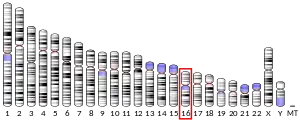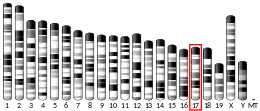| TBC1D24 | |||||||||||||||||||||||||||||||||||||||||||||||||||
|---|---|---|---|---|---|---|---|---|---|---|---|---|---|---|---|---|---|---|---|---|---|---|---|---|---|---|---|---|---|---|---|---|---|---|---|---|---|---|---|---|---|---|---|---|---|---|---|---|---|---|---|
| Identifiers | |||||||||||||||||||||||||||||||||||||||||||||||||||
| Aliases | TBC1D24, DFNA65, DFNB86, DOORS, EIEE16, FIME, TLDC6, TBC1 domain family member 24, EPRPDC, DEE16 | ||||||||||||||||||||||||||||||||||||||||||||||||||
| External IDs | OMIM: 613577 MGI: 2443456 HomoloGene: 27469 GeneCards: TBC1D24 | ||||||||||||||||||||||||||||||||||||||||||||||||||
| |||||||||||||||||||||||||||||||||||||||||||||||||||
| |||||||||||||||||||||||||||||||||||||||||||||||||||
| |||||||||||||||||||||||||||||||||||||||||||||||||||
| |||||||||||||||||||||||||||||||||||||||||||||||||||
| |||||||||||||||||||||||||||||||||||||||||||||||||||
| Wikidata | |||||||||||||||||||||||||||||||||||||||||||||||||||
| |||||||||||||||||||||||||||||||||||||||||||||||||||
TBC1 domain family, member 24 is a protein that in humans is encoded by the TBC1D24 gene.[5]
Function
This gene encodes a protein with a conserved domain, referred to as the TBC domain, characteristic of proteins which interact with GTPases. TBC domain proteins may serve as GTPase-activating proteins for a particular group of GTPases, the Rab (Ras-related proteins in brain) small GTPases which are involved in the regulation of membrane trafficking. Mutations in this gene are associated with familial infantile myoclonic epilepsy. Alternative splicing results in multiple transcript variants.
Mutations in TBC1D24 cause Hereditary hearing loss.[6]
References
- 1 2 3 GRCh38: Ensembl release 89: ENSG00000162065 - Ensembl, May 2017
- 1 2 3 GRCm38: Ensembl release 89: ENSMUSG00000036473 - Ensembl, May 2017
- ↑ "Human PubMed Reference:". National Center for Biotechnology Information, U.S. National Library of Medicine.
- ↑ "Mouse PubMed Reference:". National Center for Biotechnology Information, U.S. National Library of Medicine.
- ↑ "Entrez Gene: TBC1 domain family, member 24".
- ↑ Azaiez H, Booth KT, Bu F, Huygen P, Shibata SB, Shearer AE, Kolbe D, Meyer N, Black-Ziegelbein EA, Smith RJ (July 2014). "TBC1D24 mutation causes autosomal-dominant nonsyndromic hearing loss". Human Mutation. 35 (7): 819–23. doi:10.1002/humu.22557. PMC 4267685. PMID 24729539.
Further reading
- Hirosawa M, Nagase T, Ishikawa K, Kikuno R, Nomura N, Ohara O (October 1999). "Characterization of cDNA clones selected by the GeneMark analysis from size-fractionated cDNA libraries from human brain". DNA Research. 6 (5): 329–36. doi:10.1093/dnares/6.5.329. PMID 10574461.
- Fukuda M (June 2011). "TBC proteins: GAPs for mammalian small GTPase Rab?". Bioscience Reports. 31 (3): 159–68. doi:10.1042/BSR20100112. PMID 21250943.
- Corbett MA, Bahlo M, Jolly L, Afawi Z, Gardner AE, Oliver KL, Tan S, Coffey A, Mulley JC, Dibbens LM, Simri W, Shalata A, Kivity S, Jackson GD, Berkovic SF, Gecz J (September 2010). "A focal epilepsy and intellectual disability syndrome is due to a mutation in TBC1D24". American Journal of Human Genetics. 87 (3): 371–5. doi:10.1016/j.ajhg.2010.08.001. PMC 2933342. PMID 20797691.
- Ishibashi K, Kanno E, Itoh T, Fukuda M (January 2009). "Identification and characterization of a novel Tre-2/Bub2/Cdc16 (TBC) protein that possesses Rab3A-GAP activity". Genes to Cells. 14 (1): 41–52. doi:10.1111/j.1365-2443.2008.01251.x. PMID 19077034. S2CID 26454981.
- Falace A, Filipello F, La Padula V, Vanni N, Madia F, De Pietri Tonelli D, de Falco FA, Striano P, Dagna Bricarelli F, Minetti C, Benfenati F, Fassio A, Zara F (September 2010). "TBC1D24, an ARF6-interacting protein, is mutated in familial infantile myoclonic epilepsy". American Journal of Human Genetics. 87 (3): 365–70. doi:10.1016/j.ajhg.2010.07.020. PMC 2933335. PMID 20727515.
This article incorporates text from the United States National Library of Medicine, which is in the public domain.



